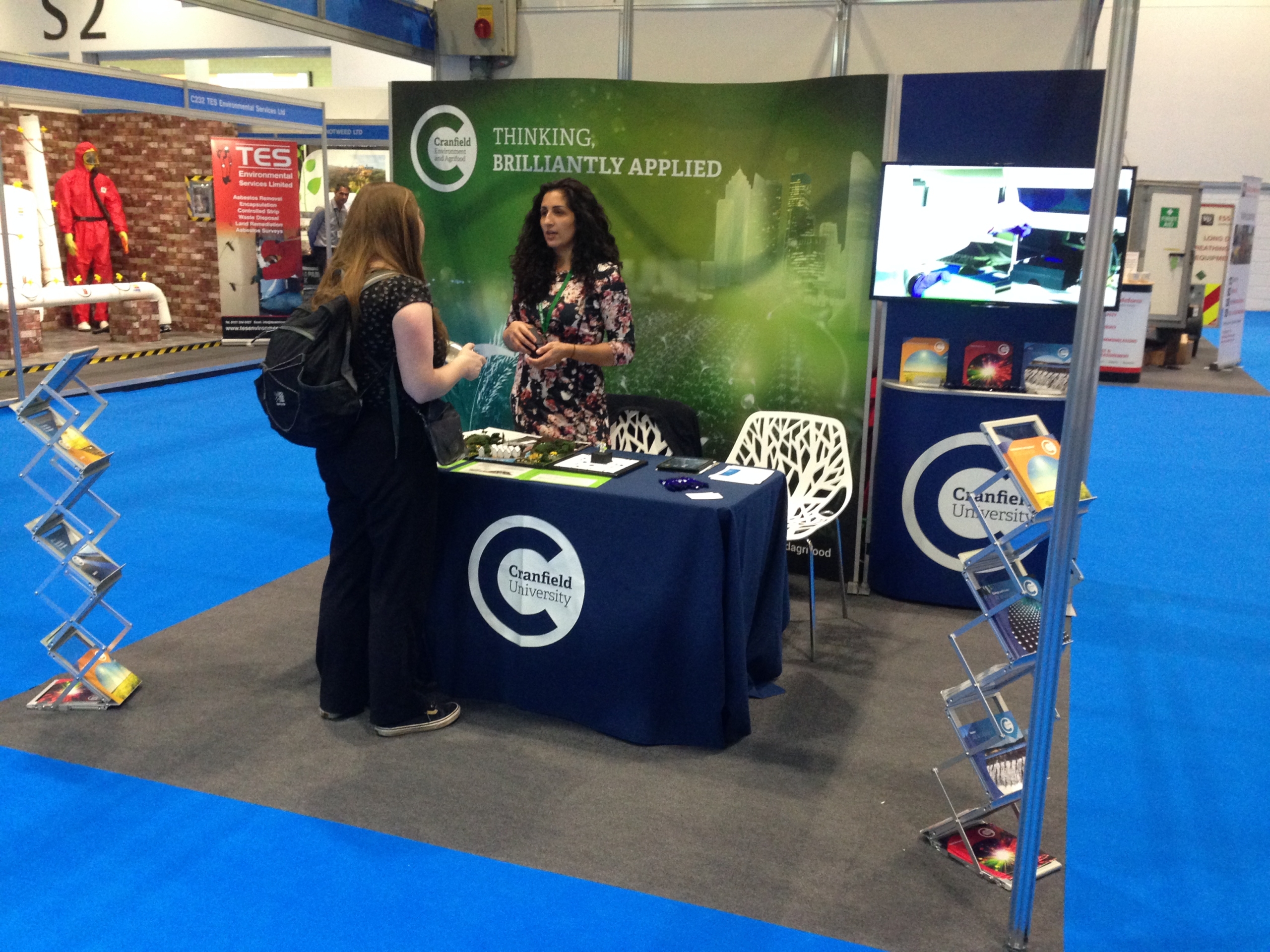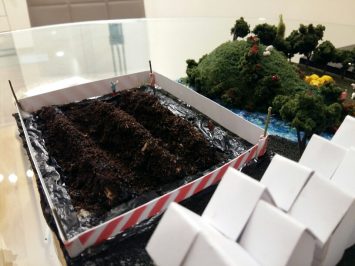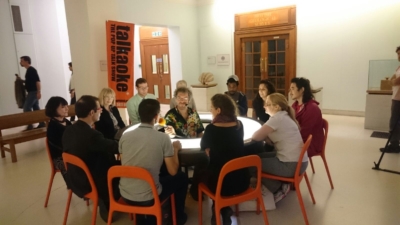Showcasing my Cranfield research at outreach events
24/10/2016

More than 200 years of industrialisation has left a legacy of contaminated sites across Europe. According to the European Environment Agency, some three million sites in our continent alone are affected by potentially polluting activities, of which about 500,000 are in need of remediation (reversing or stopping environmental damage).
Contaminated land is a growing concern as it poses threats for the environment and to human health. But how can this problem be effectively communicated to a wider audience?
As a Marie Curie Early Stage Researcher in Environmental Science at Cranfield, my research project is part of a training network funded by the European Union called REMEDIATE. In this project, my research focuses on environmental chemistry and toxicological approaches to site assessments.
To help people understand contaminated land and its impact – not a simple task! – I decided to take part in two outreach events (Science Uncovered 2016, and more recently the Contamination Expo Series 2016).
Science Uncovered, part of the European Researchers’ Night, was a free event at the fascinating National History Museum in London with the whole event attracting as many as 30,000 visitors.
The European Researchers’ Night, which received funding from the EU’s Horizon 2020 programme, took part simultaneously across Europe as more than 200 leading museums opened their doors to the public. Hundreds of scientists presented their work and explained how their research is shaping the future.
 Presenting my work on contaminated land and remediation at the EU corner, I had a miniature model which showed potential receptor-contaminant-pathway linkage and explained some of the remediation strategies. I had the opportunity to engage with a wide audience from young kids to teenagers, through to adults and, of course, other scientists. I also provided some free scientific magazines, from the Royal Society of Chemistry (RSC), along with the Chartered Institution of Water and Environmental Management (CIWEM), as well as a copy of an article I wrote for Labiotech.eu that, perhaps surprisingly, people were very happy to take and read!
Presenting my work on contaminated land and remediation at the EU corner, I had a miniature model which showed potential receptor-contaminant-pathway linkage and explained some of the remediation strategies. I had the opportunity to engage with a wide audience from young kids to teenagers, through to adults and, of course, other scientists. I also provided some free scientific magazines, from the Royal Society of Chemistry (RSC), along with the Chartered Institution of Water and Environmental Management (CIWEM), as well as a copy of an article I wrote for Labiotech.eu that, perhaps surprisingly, people were very happy to take and read!
I also participated in the ‘talkaoke’; this is basically a big, round table with a hole in the middle (like a doughnut!). The public and a couple of scientists at a time come and sit around the edge, while a trained host / facilitator sits in the middle and gets the conversation flowing in a relaxed, interactive way.
 I was glad to see so many people curious about science; I’d recommend more Cranfield researchers taking part next year as it’s an absolutely fantastic event. I’d also like to acknowledge the help provided by Camilla Tham and Alastair Hendry, who are known as ‘science communicators’, from the Natural History Museum.
I was glad to see so many people curious about science; I’d recommend more Cranfield researchers taking part next year as it’s an absolutely fantastic event. I’d also like to acknowledge the help provided by Camilla Tham and Alastair Hendry, who are known as ‘science communicators’, from the Natural History Museum.
Another more recent experience, also in London but at the ExCeL exhibition centre this time, was the Contamination Expo Series 2016. This was the first event of its kind and brought together world-class experts in the remediation sector. I attended the first of the two days and it was a valuable experience, listening to great talks and world-class speakers. Presentations were informative, very engaging and helpful; I appreciated that they allowed enough time for some thoughtful Q&A sessions and discussion.
This successful event was an amazing opportunity for me to showcase my research on the Cranfield stand, as well as meet people working in related areas of environmental science, geochemistry, geoscience and other disciplines. This proved to be a good networking opportunity and generated a lot of ideas about how to continue to expand my skills and my professional qualifications.
Categories & Tags:
Leave a comment on this post:
You might also like…
Keren Tuv: My Cranfield experience studying Renewable Energy
Hello, my name is Keren, I am from London, UK, and I am studying Renewable Energy MSc. My journey to discovering Cranfield University began when I first decided to return to academia to pursue ...
3D Metal Manufacturing in space: A look into the future
David Rico Sierra, Research Fellow in Additive Manufacturing, was recently involved in an exciting project to manufacture parts using 3D printers in space. Here he reflects on his time working with Airbus in Toulouse… ...
A Legacy of Courage: From India to Britain, Three Generations Find Their Home
My story begins with my grandfather, who plucked up the courage to travel aboard at the age of 22 and start a new life in the UK. I don’t think he would have thought that ...
Cranfield to JLR: mastering mechatronics for a dream career
My name is Jerin Tom, and in 2023 I graduated from Cranfield with an MSc in Automotive Mechatronics. Originally from India, I've always been fascinated by the world of automobiles. Why Cranfield and the ...
Bringing the vision of advanced air mobility closer to reality
Experts at Cranfield University led by Professor Antonios Tsourdos, Head of the Autonomous and Cyber-Physical Systems Centre, are part of the Air Mobility Ecosystem Consortium (AMEC), which aims to demonstrate the commercial and operational ...
Using grey literature in your research: A short guide
As you research and write your thesis, you might come across, or be looking for, ‘grey literature’. This is quite simply material that is either unpublished, or published but not in a commercial form. Types ...






